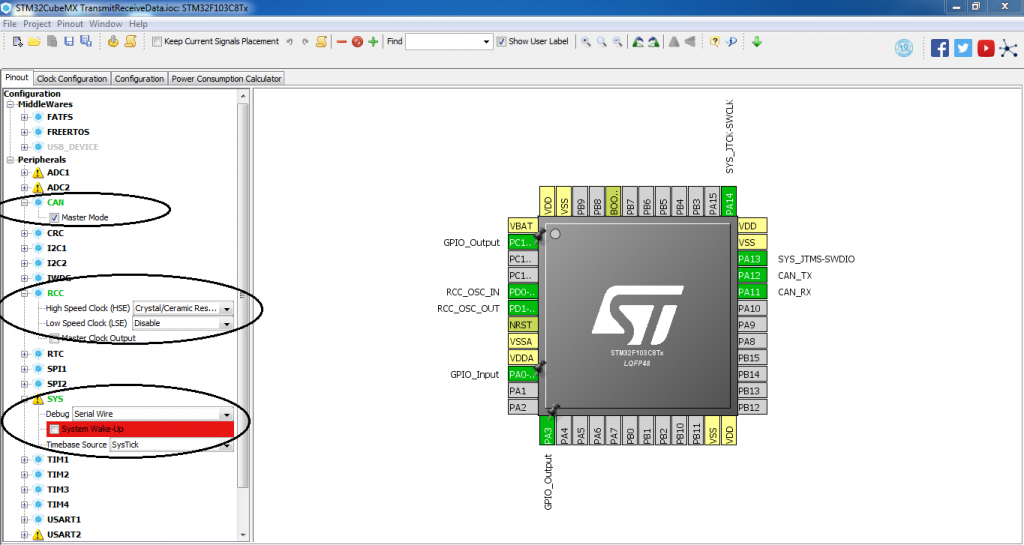首页C语言输入的第一行包含一个正整数n,表示共有n个字符需要编码。其中n不超过100。 第二行中有n个用空格隔开的正整数,分别表示n个字符的权值。 【输出形式】 共n行,每行一个字符串,表示对应字符的哈夫曼编码。 【注意】保证每次左子树比右子树的权值小;如出现相同权值的,则先出现的在左子树。 【样例输入】 8 5 29 7 8 14 23 3 11 【样例输出】 0001 10 1110 1111 110 01 0000 001
C语言输入的第一行包含一个正整数n,表示共有n个字符需要编码。其中n不超过100。 第二行中有n个用空格隔开的正整数,分别表示n个字符的权值。 【输出形式】 共n行,每行一个字符串,表示对应字符的哈夫曼编码。 【注意】保证每次左子树比右子树的权值小;如出现相同权值的,则先出现的在左子树。 【样例输入】 8 5 29 7 8 14 23 3 11 【样例输出】 0001 10 1110 1111 110 01 0000 001
时间: 2023-06-27 12:05:11 浏览: 254
这道题需要先构建哈夫曼树,然后根据哈夫曼树求出每个字符的哈夫曼编码。
具体步骤如下:
1. 将给定的n个权值按照从小到大的顺序排列。
2. 构建哈夫曼树。首先将n个权值作为n个叶子节点,然后将这些叶子节点依次放入一个小根堆中。每次从小根堆中取出两个权值最小的节点,合并成一个新节点,并将新节点的权值设为这两个节点的权值之和。将新节点放回小根堆中。重复上述步骤,直到小根堆中只剩下一个节点,即为哈夫曼树的根节点。
3. 对于哈夫曼树上的每个叶子节点,从该节点向上遍历到根节点,如果经过的边为左子树,则在编码序列中添加一个0,否则添加一个1。最终得到该叶子节点的哈夫曼编码。
下面是C语言的代码实现:
阅读全文
CSDN会员
开通CSDN年卡参与万元壕礼抽奖
大家在看
LTE Signaling & Protocol Analysis Focus: E-UTRAN and UE
非常不错,采用问答的方式来学习LTE和EPC,本章主要关注于UE和RAN部分。
This eBook is a must for everybody who requires a detailed understanding of the protocols and signaling procedures within E-UTRAN and the EPC. In that respect the clear focus of this course is on the protocols of the UE and the E-UTRAN.
The eBook starts with a review of the LTE physical layer and the concepts and protocol stacks of E-UTRAN.
This part concludes with the review of the EPS network architecture.
Immediately afterwards we jump into real-life call flows and scenarios and confront the student with the look & feel of the LTE protocol suite. This part ends with an assessment of what will be the focus of the following chapters.
The next chapters are dedicated to the different protocols EMM, ESM, MAC, RLC, RRC, S1-AP, X2-AP, SGs-AP and S101-AP.
The eBook concludes with the presentation and analysis of LTE signaling flows and real-life call flows.
Cassandra数据模型设计最佳实践
本文是Cassandra数据模型设计第一篇(全两篇),该系列文章包含了eBay使用Cassandra数据模型设计的一些实践。其中一些最佳实践我们是通过社区学到的,有些对我们来说也是新知识,还有一些仍然具有争议性,可能在要通过进一步的实践才能从中获益。本文中,我将会讲解一些基本的实践以及一个详细的例子。即使你不了解Cassandra,也应该能理解下面大多数内容。我们尝试使用Cassandra已经超过1年时间了。Cassandra现在正在服务一些用例,涉及到的业务从大量写操作的日志记录和跟踪,到一些混合工作。其中一项服务是我们的“SocialSignal”项目,支撑着ebay的pruductpag
dujiaoka-mod:独角数卡魔改版
从原版更换为魔改版
注意:魔改版不适合纯小白,如切换到魔改版失败本人不负任何责任,请谨慎切换
升级原版为最新版
将本项目所有文件直接覆盖原有文件
在网站根目录下执行composer install重新安装依赖包
执行php artisan dujiao update
按照.env.example文件重新编辑.env文件
升级完成后请重启supervisor监听进程,以免出现数据兼容冲突。
你也可以全新安装,注意需自行安装依赖包
魔改说明
增加choice模板,该模板具有以下特色功能:
下拉式分类选择和商品选择
分类密码
增amaze模板
修改默认layui模板界面
商品密码
商品库存预警
添加极验验证(已合并到官方版)
首页弹窗
分类搜索和商品搜索
文章中心
对接
易支付增加同步回调
商品限购
限制用户最大未支付订单数,例如1表示同一用户终端同时只能存在一笔未支付
天线测试手册
能不说么?实在是没说的了。其实就这点了,真的,实在没说的了
SAP VMS 06_DealerPortal
SAP提供的功能模块,VMS 的相关资料。
包括
01_VMS_Overview&Concepts
02_VMS_Master Data
03_VMS_MTS
04_VMS_MTO
05_VMS_Customization
06_DealerPortal
最新推荐
C语言实现输入一个字符串后打印出该字符串中字符的所有排列
首先,全排列的基本思想是:对于一个包含n个不同元素的序列,我们可以先固定第一个位置,然后对剩下的n-1个元素进行全排列,然后再将第一个位置的元素替换为剩余元素中的每一个,依次类推,直到所有元素都在所有位置...
Java源码ssm框架医院预约挂号系统-毕业设计论文-期末大作业.rar
本项目是一个基于Java源码的SSM框架医院预约挂号系统,旨在利用现代信息技术优化医院的挂号流程,提升患者就医体验。系统采用了Spring、Spring MVC和MyBatis三大框架技术,实现了前后端的分离与高效交互。主要功能包括用户注册与登录、医生信息查询、预约挂号、挂号记录查看以及系统管理等。用户可以通过系统便捷地查询医生的专业背景和出诊时间,并根据自己的需求进行预约挂号,避免了长时间排队等候的不便。系统还提供了完善的挂号记录管理,用户可以随时查看自己的预约情况,确保就医计划的顺利执行。此外,系统管理模块支持管理员对医生信息和挂号数据进行维护和管理,确保系统的稳定运行和数据的准确性。该项目不仅提升了医院的运营效率,也为患者提供了更加便捷的服务体验。项目为完整毕设源码,先看项目演示,希望对需要的同学有帮助。
阿尔茨海默病脑电数据分析与辅助诊断:基于PDM模型的方法
内容概要:本文探讨了通过建模前后脑区之间的因果动态关系来识别阿尔茨海默病患者与对照组的显著不同特征,从而协助临床诊断。具体方法是利用主动力模式(PDM)及其相关非线性函数(ANF),并采用Volterra模型和Laguerre展开估计来提取全局PDM。实验结果表明,特别是对应于delta-theta和alpha频带的两个特定PDM的ANF可以有效区分两组。此外,传统信号特征如相对功率、中值频率和样本熵也被计算作为对比基准。研究发现PDM和传统特征相结合能实现完全分离患者和健康对照。
适合人群:医学影像和神经科学领域的研究人员,临床医生以及对脑电信号处理感兴趣的学者。
使用场景及目标:本研究旨在为阿尔茨海默病提供一种客观、无创且经济有效的辅助诊断手段。适用于早期诊断和监测疾病进展。
阅读建议:本文重点在于PDM模型的构建及其在阿尔茨海默病脑电数据中的应用。对于初学者,建议先熟悉脑电信号的基本概念和Volterra模型的基本理论。对于有经验的研究人员,重点关注PDM提取方法和分类性能评估。
易语言例程:用易核心支持库打造功能丰富的IE浏览框
资源摘要信息:"易语言-易核心支持库实现功能完善的IE浏览框"
易语言是一种简单易学的编程语言,主要面向中文用户。它提供了大量的库和组件,使得开发者能够快速开发各种应用程序。在易语言中,通过调用易核心支持库,可以实现功能完善的IE浏览框。IE浏览框,顾名思义,就是能够在一个应用程序窗口内嵌入一个Internet Explorer浏览器控件,从而实现网页浏览的功能。
易核心支持库是易语言中的一个重要组件,它提供了对IE浏览器核心的调用接口,使得开发者能够在易语言环境下使用IE浏览器的功能。通过这种方式,开发者可以创建一个具有完整功能的IE浏览器实例,它不仅能够显示网页,还能够支持各种浏览器操作,如前进、后退、刷新、停止等,并且还能够响应各种事件,如页面加载完成、链接点击等。
在易语言中实现IE浏览框,通常需要以下几个步骤:
1. 引入易核心支持库:首先需要在易语言的开发环境中引入易核心支持库,这样才能在程序中使用库提供的功能。
2. 创建浏览器控件:使用易核心支持库提供的API,创建一个浏览器控件实例。在这个过程中,可以设置控件的初始大小、位置等属性。
3. 加载网页:将浏览器控件与一个网页地址关联起来,即可在控件中加载显示网页内容。
4. 控制浏览器行为:通过易核心支持库提供的接口,可以控制浏览器的行为,如前进、后退、刷新页面等。同时,也可以响应浏览器事件,实现自定义的交互逻辑。
5. 调试和优化:在开发完成后,需要对IE浏览框进行调试,确保其在不同的操作和网页内容下均能够正常工作。对于性能和兼容性的问题需要进行相应的优化处理。
易语言的易核心支持库使得在易语言环境下实现IE浏览框变得非常方便,它极大地降低了开发难度,并且提高了开发效率。由于易语言的易用性,即使是初学者也能够在短时间内学会如何创建和操作IE浏览框,实现网页浏览的功能。
需要注意的是,由于IE浏览器已经逐渐被微软边缘浏览器(Microsoft Edge)所替代,使用IE核心的技术未来可能面临兼容性和安全性的挑战。因此,在实际开发中,开发者应考虑到这一点,并根据需求选择合适的浏览器控件实现技术。
此外,易语言虽然简化了编程过程,但其在功能上可能不如主流的编程语言(如C++, Java等)强大,且社区和技术支持相比其他语言可能较为有限,这些都是在选择易语言作为开发工具时需要考虑的因素。
文件名列表中的“IE类”可能是指包含实现IE浏览框功能的类库或者示例代码。在易语言中,类库是一组封装好的代码模块,其中包含了各种功能的实现。通过在易语言项目中引用这些类库,开发者可以简化开发过程,快速实现特定功能。而示例代码则为开发者提供了具体的实现参考,帮助理解和学习如何使用易核心支持库来创建IE浏览框。
管理建模和仿真的文件
管理Boualem Benatallah引用此版本:布阿利姆·贝纳塔拉。管理建模和仿真。约瑟夫-傅立叶大学-格勒诺布尔第一大学,1996年。法语。NNT:电话:00345357HAL ID:电话:00345357https://theses.hal.science/tel-003453572008年12月9日提交HAL是一个多学科的开放存取档案馆,用于存放和传播科学研究论文,无论它们是否被公开。论文可以来自法国或国外的教学和研究机构,也可以来自公共或私人研究中心。L’archive ouverte pluridisciplinaire
STM32F407ZG引脚功能深度剖析:掌握引脚分布与配置的秘密(全面解读)

# 摘要
本文全面介绍了STM32F407ZG微控制器的引脚特性、功能、配置和应用。首先概述了该芯片的引脚布局,然后详细探讨了标准外设、高级控制以及特殊功能引脚的不同配置和使用方法。在此基础上,文章深入分析了引脚模式配置、高级配置技巧,并提供了实际应用案例,如LED控制和串口通信。在设计方面,阐述了引脚布局策略、多层板设计及高密度引脚应用的解决方案。最后,介绍
给出文档中问题的答案代码
您提到的是需要编写MATLAB代码来实现文档中的实验任务。以下是根据文档内容编写的MATLAB代码示例:
```matlab
% 上机2 实验代码
% 读取输入图像
inputImage = imread('your_face_image.jpg'); % 替换为您的图像文件路径
if size(inputImage, 1) < 1024 || size(inputImage, 2) < 1024
error('图像尺寸必须大于1024x1024');
end
% 将彩色图像转换为灰度图像
grayImage = rgb2gray(inputImage);
% 调整图像大小为5
Docker构建与运行Next.js应用的指南
资源摘要信息:"rivoltafilippo-next-main"
在探讨“rivoltafilippo-next-main”这一资源时,首先要从标题“rivoltafilippo-next”入手。这个标题可能是某一项目、代码库或应用的命名,结合描述中提到的Docker构建和运行命令,我们可以推断这是一个基于Docker的Node.js应用,特别是使用了Next.js框架的项目。Next.js是一个流行的React框架,用于服务器端渲染和静态网站生成。
描述部分提供了构建和运行基于Docker的Next.js应用的具体命令:
1. `docker build`命令用于创建一个新的Docker镜像。在构建镜像的过程中,开发者可以定义Dockerfile文件,该文件是一个文本文件,包含了创建Docker镜像所需的指令集。通过使用`-t`参数,用户可以为生成的镜像指定一个标签,这里的标签是`my-next-js-app`,意味着构建的镜像将被标记为`my-next-js-app`,方便后续的识别和引用。
2. `docker run`命令则用于运行一个Docker容器,即基于镜像启动一个实例。在这个命令中,`-p 3000:3000`参数指示Docker将容器内的3000端口映射到宿主机的3000端口,这样做通常是为了让宿主机能够访问容器内运行的应用。`my-next-js-app`是容器运行时使用的镜像名称,这个名称应该与构建时指定的标签一致。
最后,我们注意到资源包含了“TypeScript”这一标签,这表明项目可能使用了TypeScript语言。TypeScript是JavaScript的一个超集,它添加了静态类型定义的特性,能够帮助开发者更容易地维护和扩展代码,尤其是在大型项目中。
结合资源名称“rivoltafilippo-next-main”,我们可以推测这是项目的主目录或主仓库。通常情况下,开发者会将项目的源代码、配置文件、构建脚本等放在一个主要的目录中,这个目录通常命名为“main”或“src”等,以便于管理和维护。
综上所述,我们可以总结出以下几个重要的知识点:
- Docker容器和镜像的概念以及它们之间的关系:Docker镜像是静态的只读模板,而Docker容器是从镜像实例化的动态运行环境。
- `docker build`命令的使用方法和作用:这个命令用于创建新的Docker镜像,通常需要一个Dockerfile来指定构建的指令和环境。
- `docker run`命令的使用方法和作用:该命令用于根据镜像启动一个或多个容器实例,并可指定端口映射等运行参数。
- Next.js框架的特点:Next.js是一个支持服务器端渲染和静态网站生成的React框架,适合构建现代的Web应用。
- TypeScript的作用和优势:TypeScript是JavaScript的一个超集,它提供了静态类型检查等特性,有助于提高代码质量和可维护性。
- 项目资源命名习惯:通常项目会有一个主目录,用来存放项目的源代码和核心配置文件,以便于项目的版本控制和团队协作。
以上内容基于给定的信息进行了深入的分析,为理解该项目的构建、运行方式以及技术栈提供了基础。在实际开发中,开发者应当参考更详细的文档和指南,以更高效地管理和部署基于Docker和TypeScript的Next.js项目。
"互动学习:行动中的多样性与论文攻读经历"
多样性她- 事实上SCI NCES你的时间表ECOLEDO C Tora SC和NCESPOUR l’Ingén学习互动,互动学习以行动为中心的强化学习学会互动,互动学习,以行动为中心的强化学习计算机科学博士论文于2021年9月28日在Villeneuve d'Asq公开支持马修·瑟林评审团主席法布里斯·勒菲弗尔阿维尼翁大学教授论文指导奥利维尔·皮耶昆谷歌研究教授:智囊团论文联合主任菲利普·普雷教授,大学。里尔/CRISTAL/因里亚报告员奥利维耶·西格德索邦大学报告员卢多维奇·德诺耶教授,Facebook /索邦大学审查员越南圣迈IMT Atlantic高级讲师邀请弗洛里安·斯特鲁布博士,Deepmind对于那些及时看到自己错误的人...3谢谢你首先,我要感谢我的两位博士生导师Olivier和Philippe。奥利维尔,"站在巨人的肩膀上"这句话对你来说完全有意义了。从科学上讲,你知道在这篇论文的(许多)错误中,你是我可以依
【热传递模型的终极指南】:掌握分类、仿真设计、优化与故障诊断的18大秘诀

# 摘要
热传递模型在工程和物理学中占有重要地位,对于提高热交换效率和散热设计至关重要。本文系统性地介绍了热传递模型的基础知识、分类以及在实际中的应用案例。文章详细阐述了导热、对流换热以及辐射传热的基本原理,并对不同类型的热传递模型进行了分类,包括稳态与非稳态模型、一维到三维模型和线性与非线性模型。通过仿真设计章节,文章展示了如何选择合适的仿真软件、构建几何模型、设置材料属性和